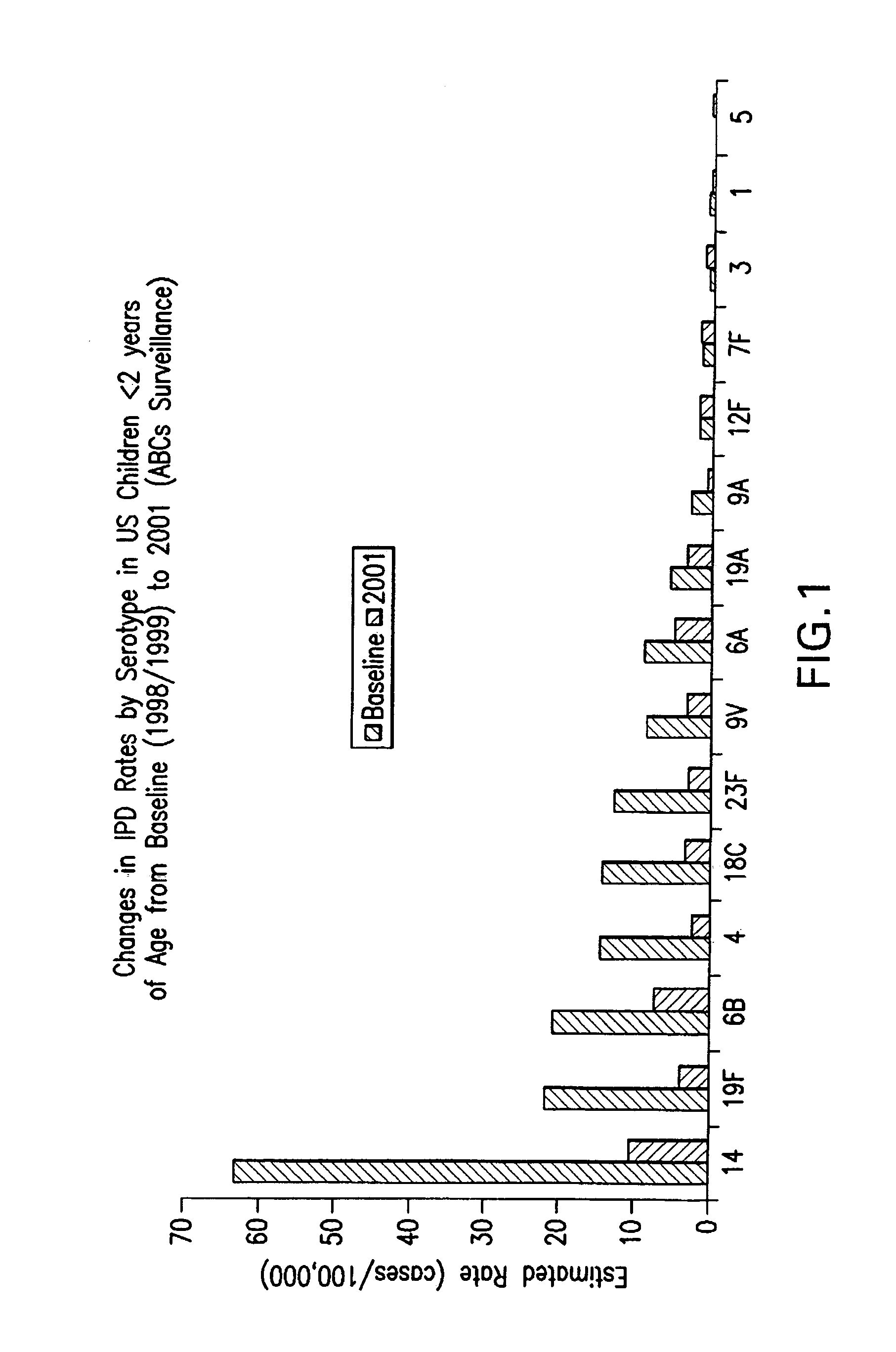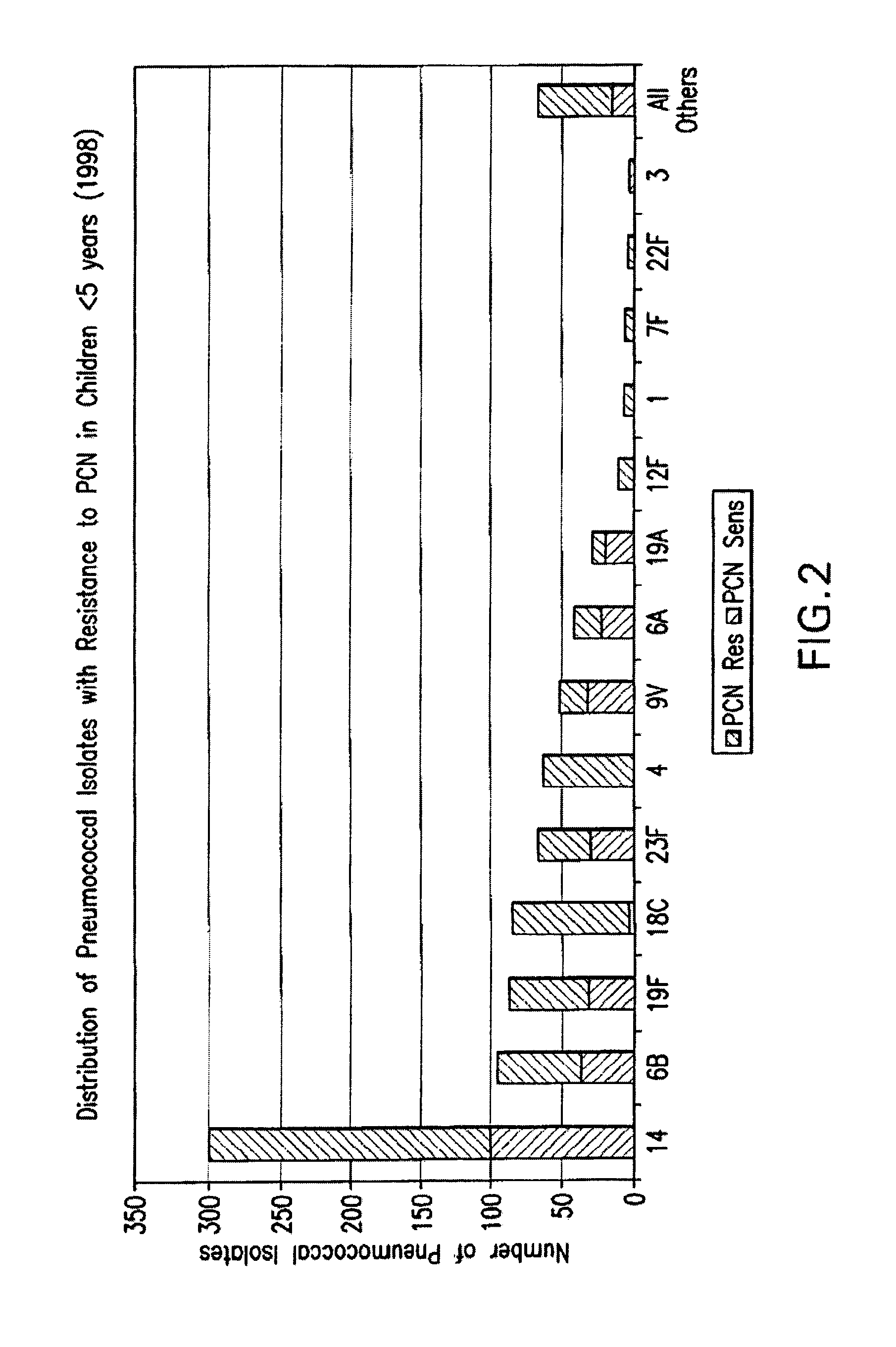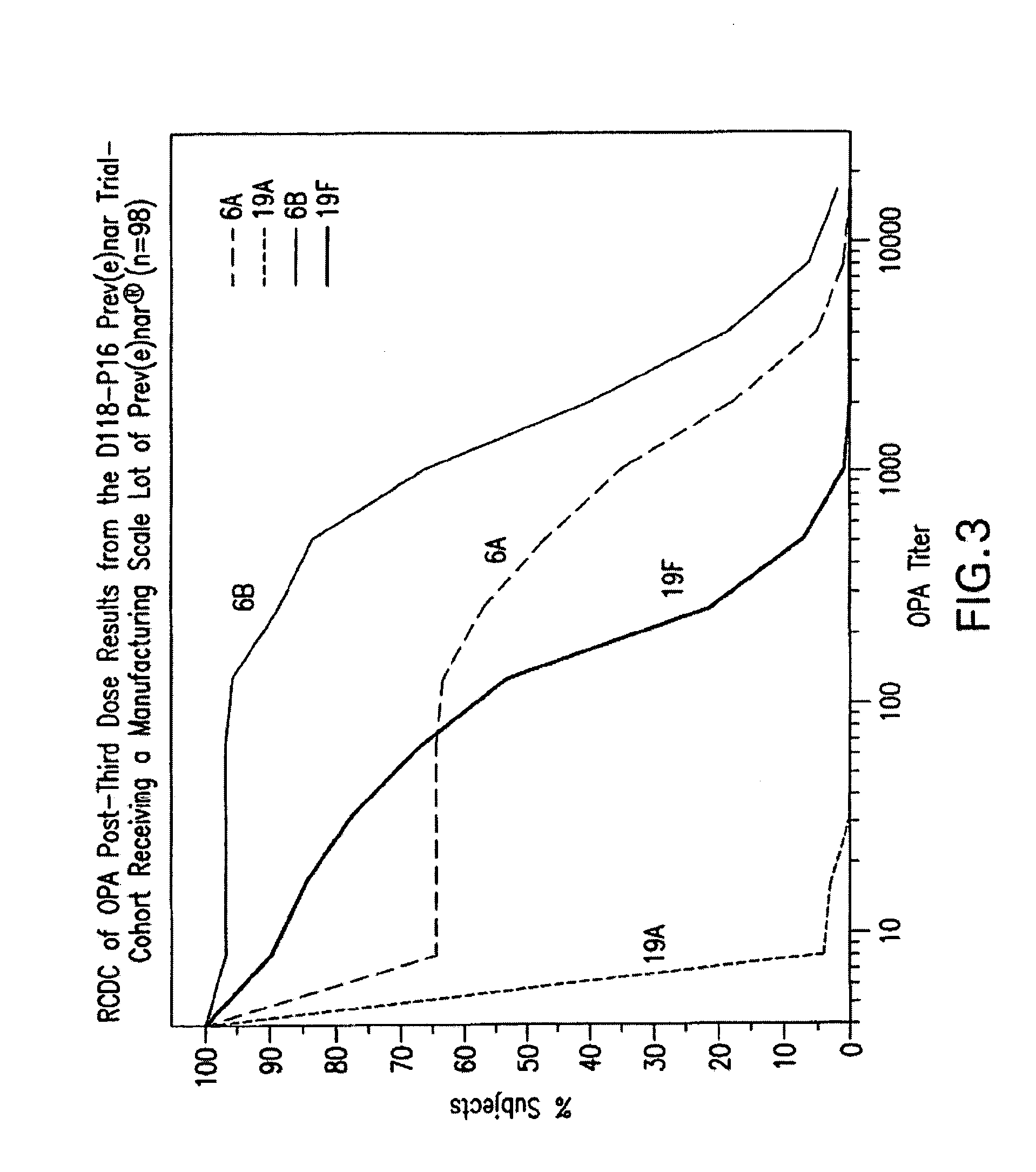Multivalent pneumococcal polysaccharide-protein conjugate composition
a polysaccharide and conjugate technology, applied in the field of medicine, can solve the problems of children and young children not responding well to most pneumococcal polysaccharides
- Summary
- Abstract
- Description
- Claims
- Application Information
AI Technical Summary
Benefits of technology
Problems solved by technology
Method used
Image
Examples
example 1
Preparation of S. Pneumoniae Capsular Polysaccharide Serotype 1
Preparation of Master and Working Cell Banks
[0077]S. pneumoniae serotype 1 was obtained from the American Type Culture Collection, ATCC, strain 6301. Several generations of seed stocks were created in order to expand the strain and remove components of animal origin (generations F1, F2, and F3). Two additional generations of seed stocks were produced. The first additional generation was made from an F3 vial, and the subsequent generation was made from a vial of the first additional generation. Seed vials were stored frozen (<−70° C.) with synthetic glycerol as a cryopreservative. In addition to frozen vials, lyophilized vials were prepared for the F4 generation. For cell bank preparation, all cultures were grown in a soy-based medium. Prior to freezing, cells were concentrated by centrifugation, spent medium was removed, and cell pellets were re-suspended in fresh medium containing a cryopreservative, such as synthetic g...
example 2
Preparation of Serotype 1 Pneumococcal Saccharide—CRM197 Conjugate
Activation and Conjugation
[0094]Containers of purified polysaccharide were thawed and combined in a reaction vessel. To the vessel, 0.2 M sodium carbonate, pH 9.0 was added for partial deacetylation (hydrolysis) for 3 hours at 50° C. The reaction was cooled to 20° C. and neutralization was performed by 0.2 M acetic acid. Oxidation in the presence of sodium periodate was performed by incubation at 2-8° C., and the mixture was stirred for 15-21 hours.
[0095]The activation reaction mixture was concentrated and diafiltered 10× with 0.9% NaCl using a 30K MWCO membrane. The retentate was 0.2 μm filtered. The activated saccharide was filled into 100 mL glass lyophilization bottles and shell-frozen at −75° C. and lyophilized.
[0096]“Shell-freezing” is a method for preparing samples for lyophilization (freeze-drying). Flasks are automatically rotated by motor driven rollers in a refrigerated bath containing alcohol or any other ...
example 3
Preparation of S. Pneumoniae Capsular Polysaccharide Serotype 3
Preparation of Master and Working Cell Banks
[0105]S. pneumoniae serotype 3 was obtained from Dr. Robert Austrian, University of Pennsylvania, Philadelphia, Pa. For preparation of the cell bank system, see Example 1.
Fermentation and Harvesting
[0106]Cultures from the working cell bank were used to inoculate seed bottles containing soy-based medium. The bottles were incubated at 36° C.±2° C. without agitation until growth requirements were met. A seed bottle was used to inoculate a seed fermentor containing soy-based medium. A pH of about 7.0 was maintained with sterile sodium carbonate solution. After the target optical density was reached, the seed fermentor was used to inoculate an intermediate seed fermentor. After the target optical density was reached, the intermediate seed fermentor was used to inoculate the production fermentor. The pH was maintained with sterile sodium carbonate solution. The fermentation was termi...
PUM
| Property | Measurement | Unit |
|---|---|---|
| pH | aaaaa | aaaaa |
| optical density | aaaaa | aaaaa |
| temperature | aaaaa | aaaaa |
Abstract
Description
Claims
Application Information
 Login to View More
Login to View More - R&D
- Intellectual Property
- Life Sciences
- Materials
- Tech Scout
- Unparalleled Data Quality
- Higher Quality Content
- 60% Fewer Hallucinations
Browse by: Latest US Patents, China's latest patents, Technical Efficacy Thesaurus, Application Domain, Technology Topic, Popular Technical Reports.
© 2025 PatSnap. All rights reserved.Legal|Privacy policy|Modern Slavery Act Transparency Statement|Sitemap|About US| Contact US: help@patsnap.com



